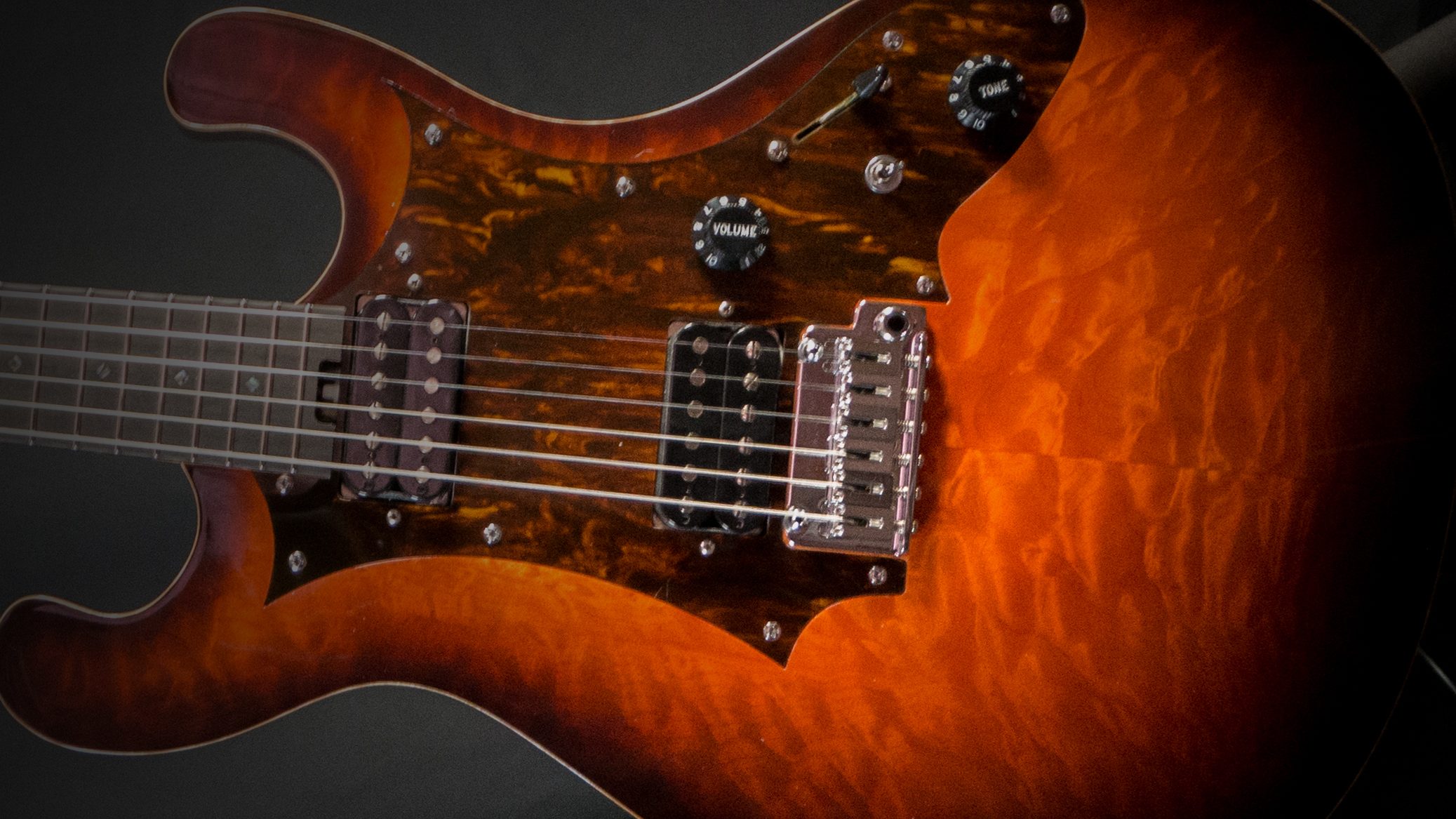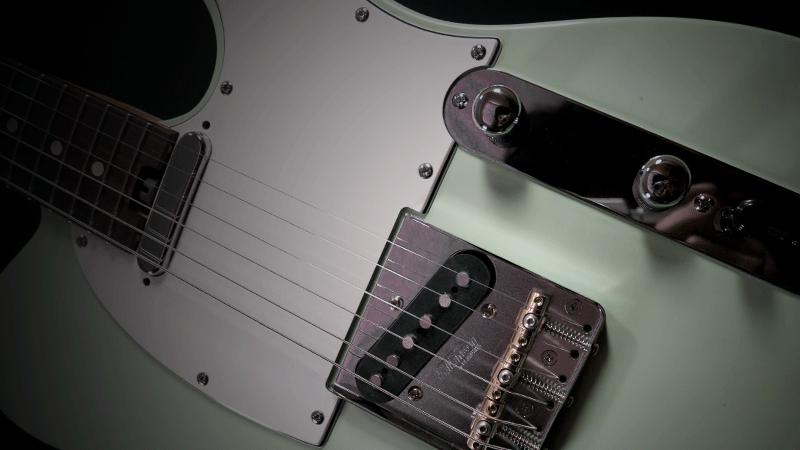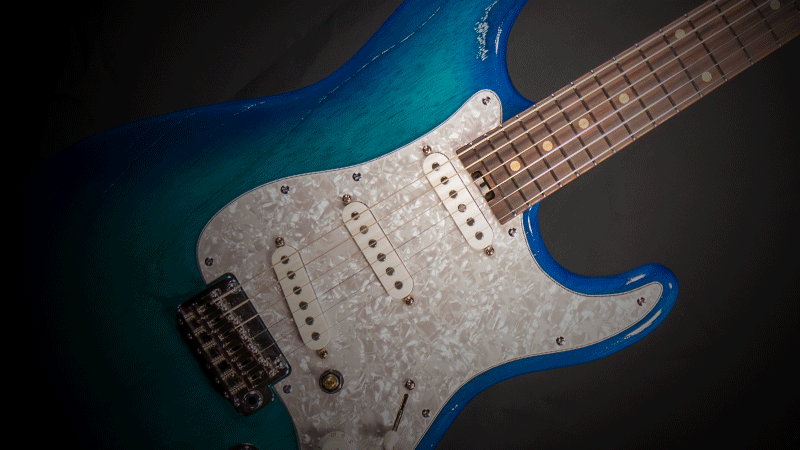Ideas that you can think of now
Infinite guitar with maximum inclusion
Making with the best wood is very difficult in our small workshop. It is also very difficult to provide a stable supply.
So Infinite went back to the starting point and researched and developed woodworking technology, embedded technology, and ideas.
Kogiku Logic, which is introduced below, and the original bonding of the fingerboard and neck are methods that are not used in conventional guitar production.
I can’t say that the new construction method is good, but I have gained rigidity that definitely affects the tone and can withstand hard use.
One of the truss rods is prepared by CNC, and the rod groove carved out by the CNC router and the lid after the rod is prepared are also made by CNC.
The truss rods, which are prepared without gaps due to the high degree of adhesion, are effective and have excellent strength.
Infinite’s guitar will continue to be the best guitar, with a return to the technical part and the maximum possible ideas.
Kogic Logic
Rich sustain can be obtained by firmly engaging the three convexes on the neck side and the three concaves on the body side. In addition, the center shift due to impact, which is a weak point of the bolt joint, does not occur at all, and a stable state can be maintained.
Grooves are dug on both the neck side and body side, and ebony material is machined by CNC and glued to the neck side in order to stabilize the strength.
If the neck pocket itself is tightened, it will lead to the attenuation of sustain and affect the sound balance of each string, so the neck pocket itself is not so tight and it should fit smoothly. The neck does not come off even without bolts because the three grooves and Kogiku are firmly engaged.
Adhesion of fingerboard and neck
A unique construction method in which a concave groove is drilled on the fingerboard side and a convex is formed on the neck side.
The increase in the adhesive area promotes the integration of the neck and fingerboard. The convex on the neck side is formed by opening slightly outward from the nut side to the neck end side.
By doing so, we have confirmed the effect of preventing the fingerboard from shifting when adhering the neck and increasing the neck strength.
By increasing the neck strength, the neck firmly receives the string vibration in terms of sound and can transmit it firmly to Kogiku Logic, and it contributes to the sound side by sounding the body firmly.
Fret Jescar stainless is adopted as standard
Jescar stainless steel frets are standard on all Infinite models. The Trad series uses 47095-SS, and the Trad Fullsize / Modernize series uses 55090-SS. (You can also make it in your desired size when ordering)
The fret side edge finish cultivated over many years of repair technology is a round smooth edge that maximizes the effective width of the fret end, suppresses string drop, and firmly supports vibrato and legato play.
In terms of durability, it is recognized that it is used by Lucia all over the world, but since it has excellent wear resistance and does not rust or dull, it fully supports playability with a stress-free neck. I will do it.
It is also well thought out in terms of sound, and is a tone that overturns the image of conventional stainless steel frets. Infinite guitars are tuned on the premise of that tone, so we promise the best tone.
Install BFTS on all models
Bass Phaeton Tuning System (BFTS) is installed as standard on all models.
Since the fret groove and nut groove are formed by the CNC router, the scale position is carved out without any deviation, and BFTS is installed to further improve the pitch accuracy.
The maximum effect can be achieved by tuning with a dedicated tuner or by tuning each string with a preset tuner, but even if you play with normal tuning, the pitch is good. You can feel it.
Pitch correction and octave tuning are very important setup items for many years of repairs.
For Infinite guitars, the final setup of all guitars is the responsibility of Hatta, the representative who owns the BFTS license.
Headstock and peg drop processing
Since the Trad series is not a lock peg, it is equipped with a string guide, but since it is installed at a very shallow angle, the cause of tuning error is minimized.
In addition, I think that the tension balance of each string is very important, so I dropped the bush of the peg, made the neck thicker by that amount, and adjusted it so that it would be the ideal angle when the strings were stretched.
Since no string guide is attached except for the Trad series, the tuning stability is very excellent.
Unprecedented accessibility
Access to the high position has achieved smooth operability that is unthinkable with conventional guitars.
Smooth operability is ensured by boldly cutting the body side of the neck joint part, but since problems with the strength of the wood and sound will occur, it is not possible to make a bold cut with the conventional joint method.
Kogiku Logic succeeded in securing a large joint area, which was solved in terms of strength and sound.
Woodworking by CNC
Kogiku Logic and the joint between the neck and fingerboard can only be formed stably with a CNC router. In addition to that, the CNC router is used to form the body, neck, and fret grooves and bridge positions, so processing accuracy can be kept high and manufacturing costs can be stabilized.
Since we are doing CAD / CAM (a program to create the design and shape of musical instruments in 3D on a PC, and a program to run the program with a CNC router) in-house, we can make fine adjustments and develop new models at any time. It can be done speedily, and data can be corrected at any time even if there is a deviation due to an individual unique to woodworking, and processing that requires accuracy is performed only with a CNC router to stabilize the accuracy.



